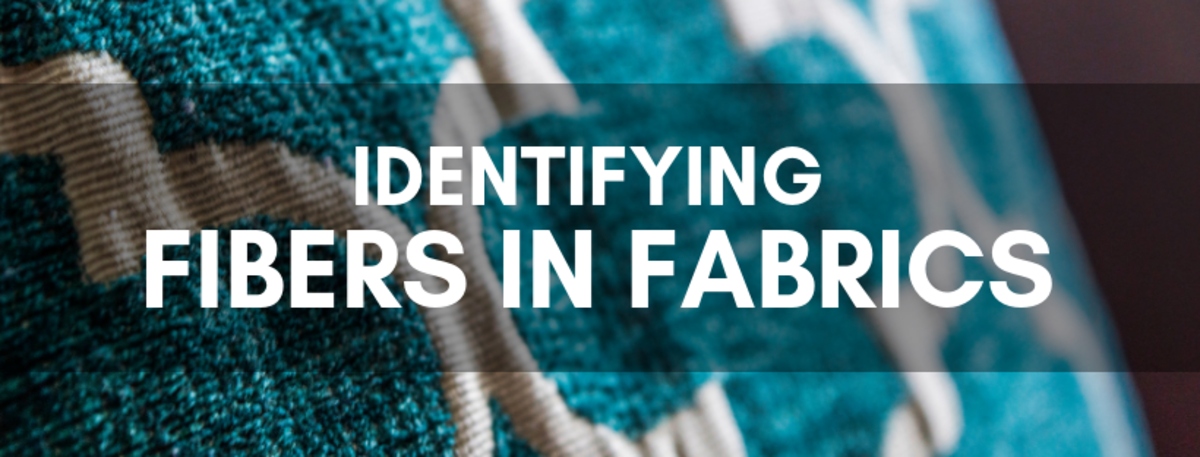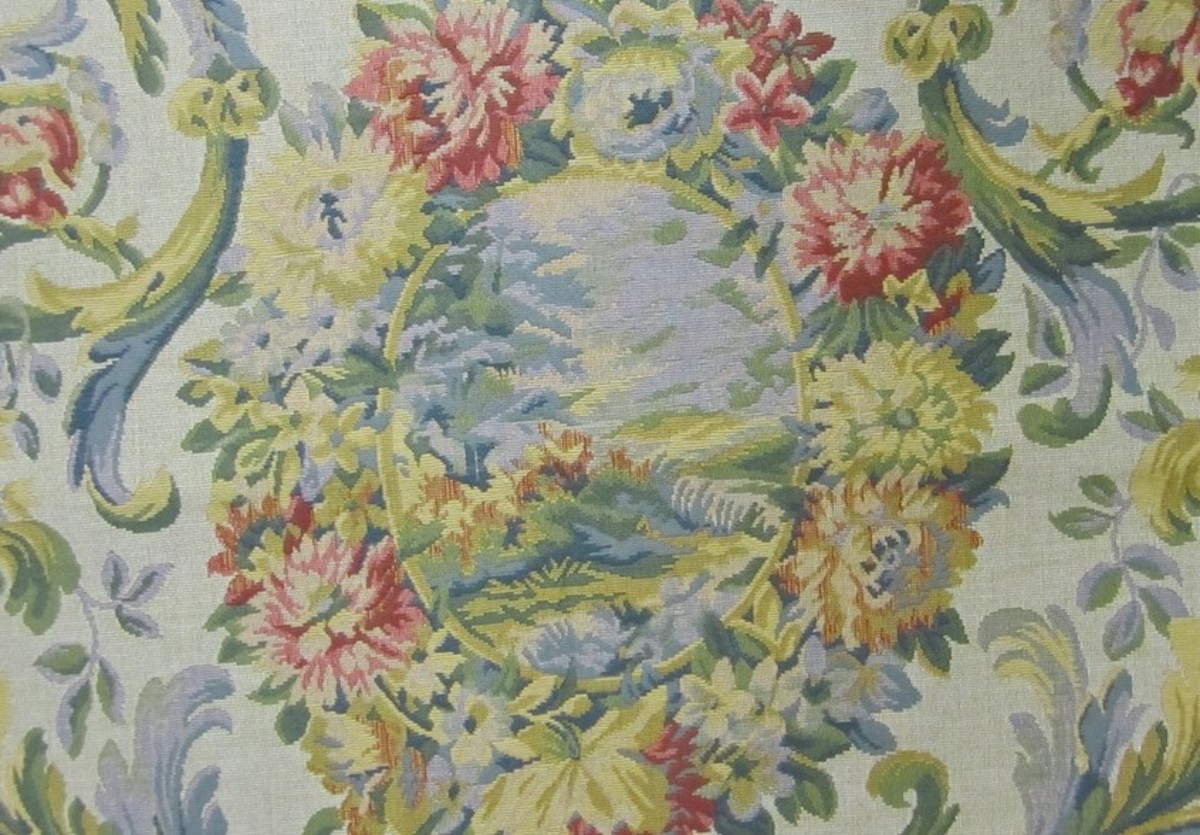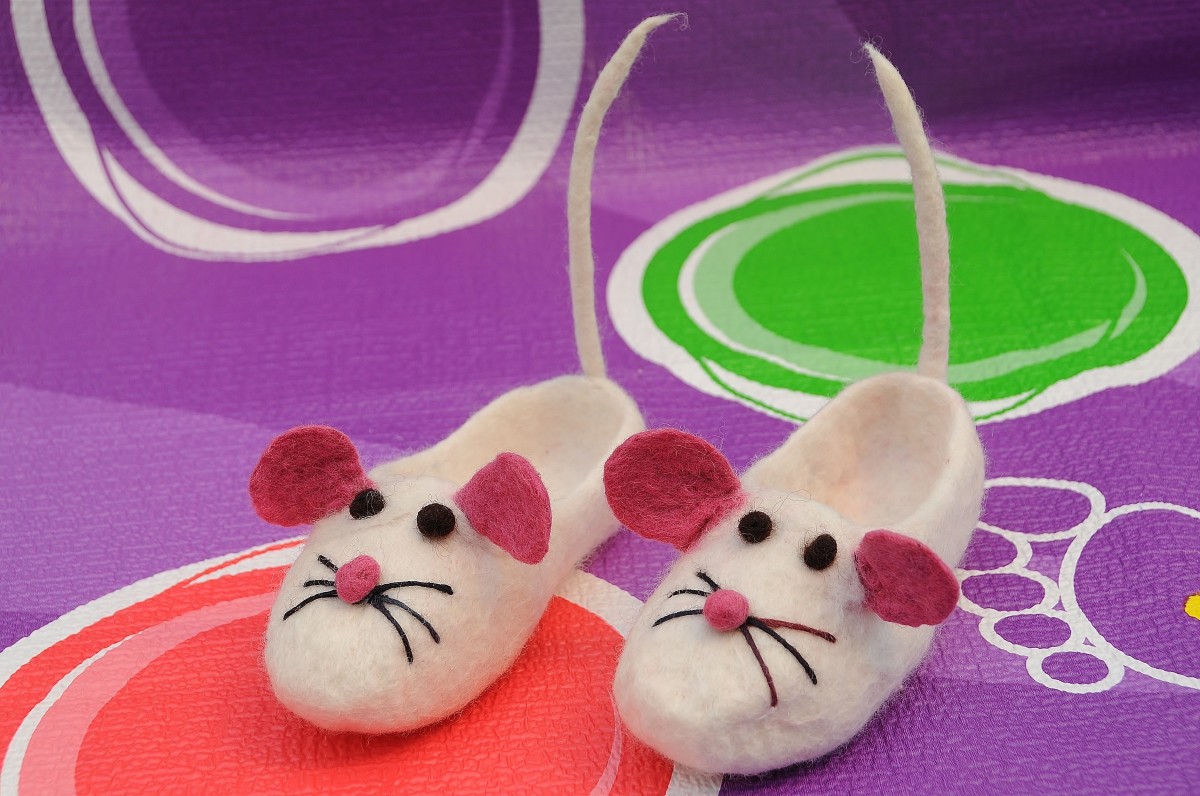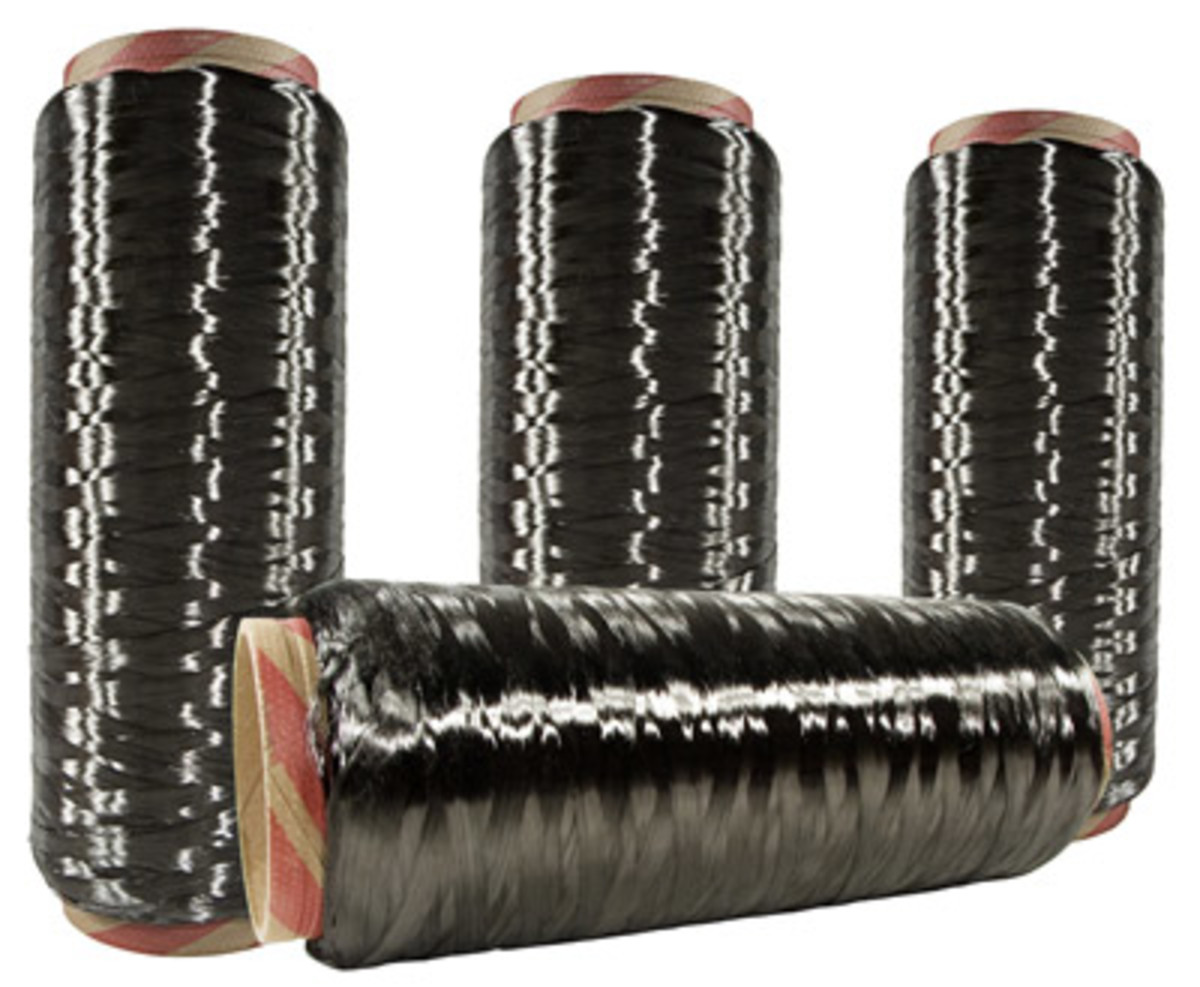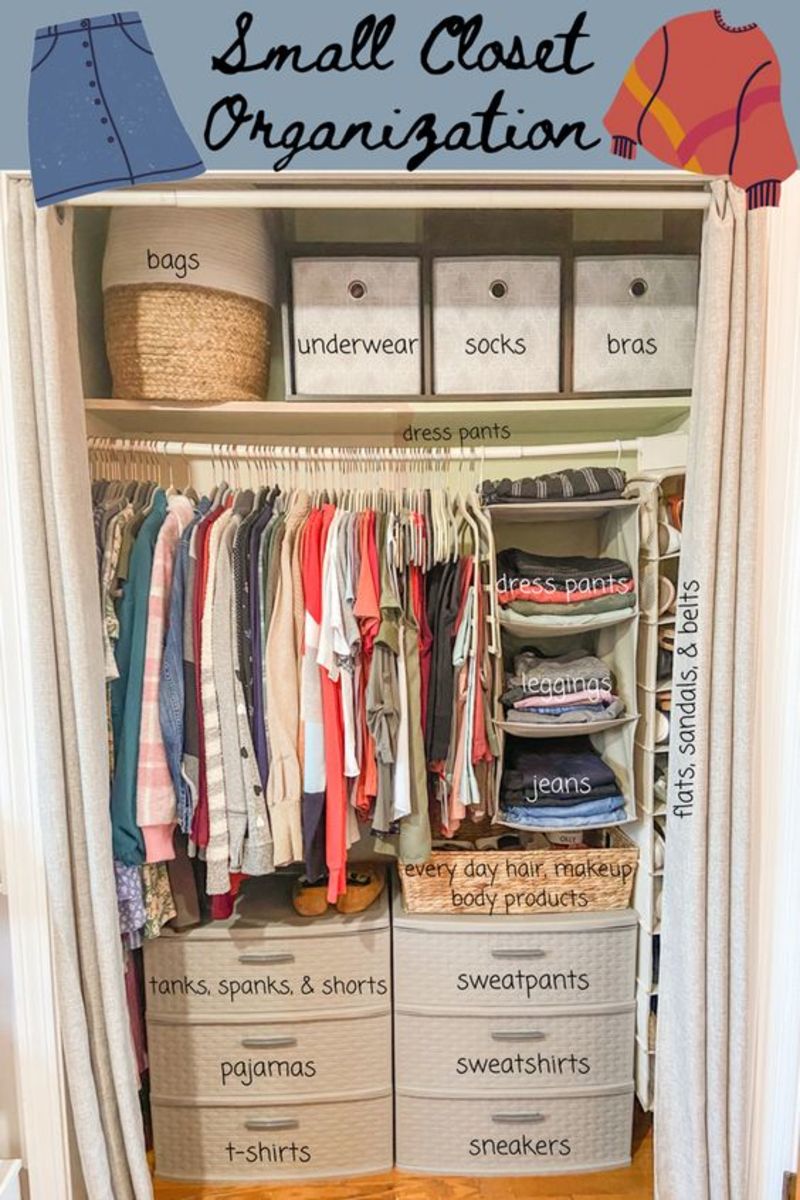How Pillow Forms Are Made

Pillow Forms - How It's Made
A pictorial presentation of the manufacturing process of a pillow factory in Toronto, Canada. Follow the pillow form from its humble beginning as raw polyester and polypropylene all the way to the fabulous end product that goes into many different homes. Pillow forms are also interchangeably referred to as "pillow inserts", "cushion forms" and "cushion inserts" and you will probably see me switch it up for no good reason at all. Don't be concerned and remember that pillow form just means something that stuffed inside of a fancy cushion cover (which is why some people also call them "pillow stuffers" but that is probably too many terms for one simple product).
All pictures taken by me, please feel free to share them if you link back here.
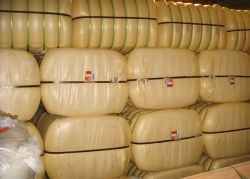
1) Bales of Polyester Fiber
The 600 pound bale in the room...
Every pillow form starts with the humble beginning as part of a huge, 600 pound bale of polyester fiber. The bales come from all over the world, including China, India, Bangladesh and the United States. To save on shipping costs, these bales are usually shipped very compressed, which also helps them to stack easily.
These bales shown here are all "virgin" fiber - i.e. they are not recycled fibers. Some manufacturers like to use cheaper recycled fibers, but it comes at the cost of the look and feel of the pillow insert. As they say - "garbage in - garbage out". A great pillow is only as good as the polyester (or other material) that is put inside it. Hollow fibers are the best, as they provide natural, long-lasting loft.
Bales of Polyester Fiber - Stacked for storage
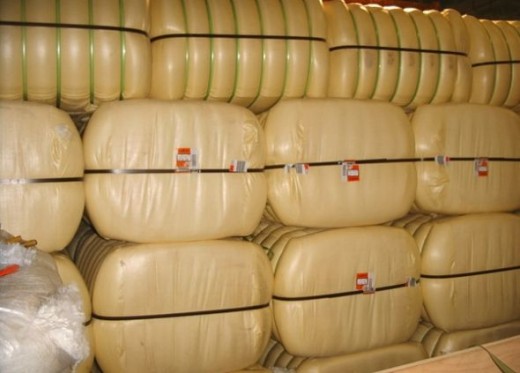

2) The Bale is Opened
And expands to 3X the size...
As soon as the bale is opened, it practically burst, almost exploding out from its straps. The high loft nature of polyester stuffing puts extreme pressure on the packaging, so extreme caution is required when opening the bales to make sure no body gets injured. You can already see how the fiber is a beautiful, clean white that will look great in a cushion insert.
It is difficult to see in the picture, but the fiber is layered so that each layer can be lifted into the processing machine without consuming too much labour time. The polyester has a nice slick feel to it due to its silicone coating which allows it to flow through the machine. Dry fiber can be extremely damaging to a machine as it can clog the gears.
A Closer Look at an Open Bale
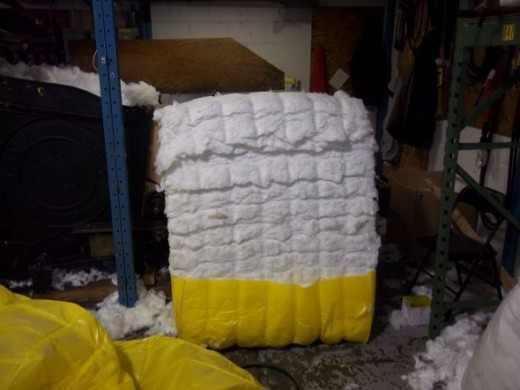
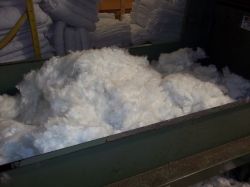
3) The Machine is Loaded
Out from the bale and into the hopper...
The fiber is taken from the bale and loaded into the hopper. The hopper is basically a bin with a conveyor belt underneath it. When the machine turns on, the fiber is pulled towards the actual parts that process the fiber and allow it to have the fantastic loft associated with synthetic filled products. The factory needs to be careful not to overload the hopper as it can clog the machine. Fill the hopper to at most the top, though a good balance between efficiency and reliability needs to be maintained. To ensure that the fiber goes through the machine without a hitch, the fibers are hand opened a little in the hopper. This helps the machine make an even better finished product.
Machine 2 Loaded with Polyester - This machine has more capacity...
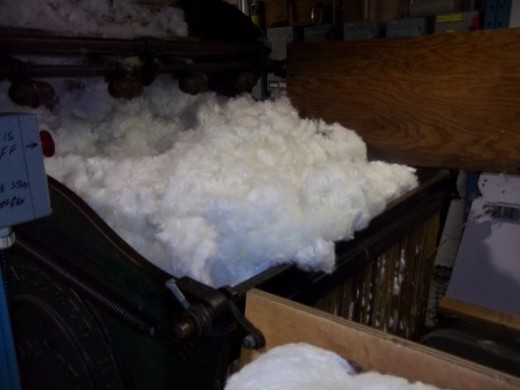
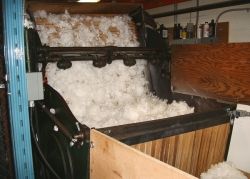
4) The Machine Opens the Fiber
The hooks rip open the fibers
As the poly moves from the hopper and into the machine, it encounters a rack of "claws" that rip open the polyester. It isn't as violent as it sounds, though. This element of the manufacturing process is essential as it gives the pillow forms most of its loft. It reverses the effect of the compression employed on the bales that it originally came in. If you look closely, you will see how the opening process works. The fibers are caught on the hooks and are brushed off, into the next stage of the process.
A closer look...
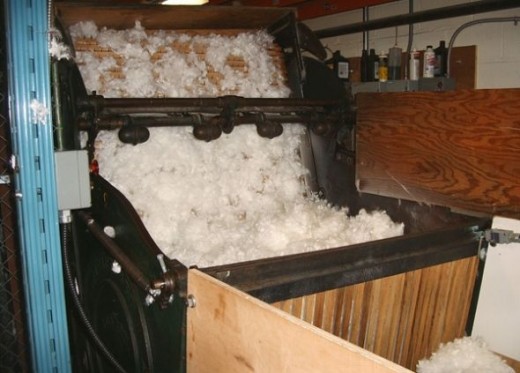
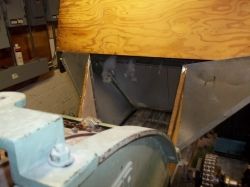
5) The Fiber is Fluffed Up
While not the most dramatic step in the manufacturing process, the polyester now begins its life as an aerated, fluffy and stuff-able material. Now that the polyfill has been separated by the previous process, each individual piece is forced into the chamber, a method which allows the fibers to catch air and fluff up. They move quickly through this process as the extremely light individual fibers are pulled through very fast. They spin through a circular chamber, before entering the final chamber.
The Fiber is Spun Around - All about airing it out...
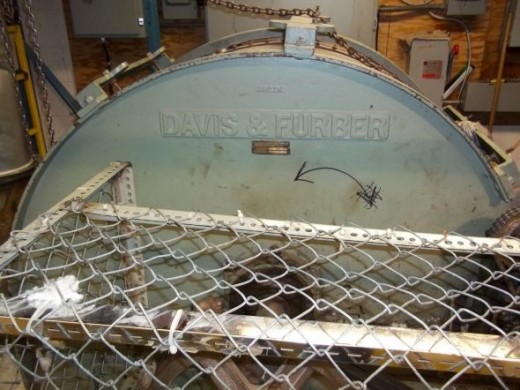
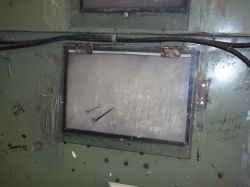
6) The Loose Fibers Enter the Chamber
The chamber is where all the polyester fibers sit, waiting to be blown into a waiting pillow form shell. The chamber is pressurized so that the fiber is aerated even more. The fibers are constantly moving so that they capture as much air as possible. Also, the movement of the fibers allows them to flow through the nozzle easily and works with the blowing process to fill the pillow form up properly. The final chamber can hold about 30 to 40 pounds of stuffing, so the entire process (pre-opening, loading, etc.) needs to be done continuously to ensure that the manufacturing process does not get interrupted.
Machine 2's Chamber
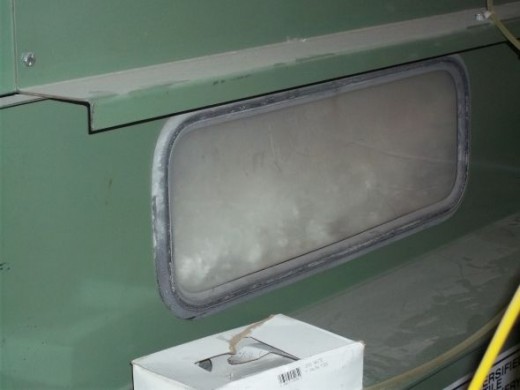
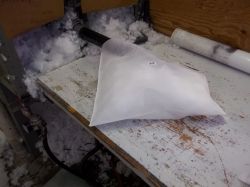
7) The Fiber is blown into the Pillow Form
You can see the pillow form on the nozzle, waiting to be filled from the fiber sitting in the chamber. There are a few nozzle widths that can be used, but typically the nozzle used will fit into a 5" or 8" opening in the pillow form shell. There is a small foot pedal that is pushed that forces the fiber into the waiting pillow form shell. An experienced operator is able to finely tune the filling process to properly fill every corner. Each cushion insert is manually weighed to ensure that it meets factory specifications (and keeps the customers happy and coming back for more).
Each Pillow is Weighed - Quality Control is very important
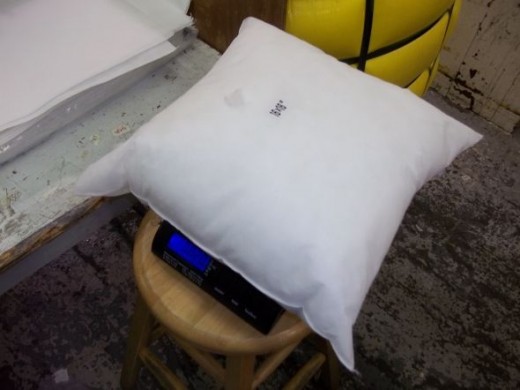
Quality Control
Quality Control is vital and is the key to building long-term repeat business.
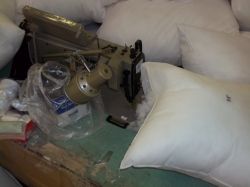
8) Pillow Forms are Sewn Closed
You can see the stuffed pillow form by the machine, waiting to be serged closed. Each pillow is hand sewn closed by an experienced operator. The operator will occasionally visually inspect the pillow insert to make sure it meets the factory's quality guidelines. This can include any defects such as improper weight, holes in the fabric or dirt/smudges on the pillow form itself. This stage of the process is usually the fastest, since an experienced operator can sew one pillow form every five seconds.
Pillow Forms in the Bin - Waiting to be finished
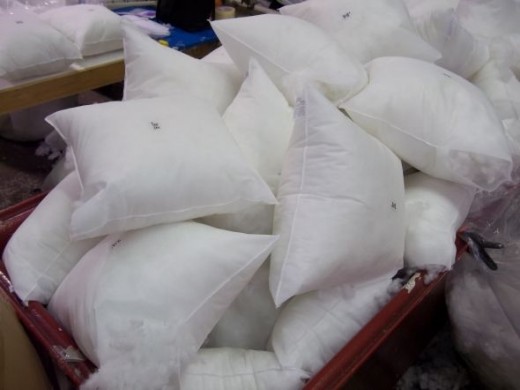
9) The Pillows are Packaged - Ready and Waiting to be Shipped
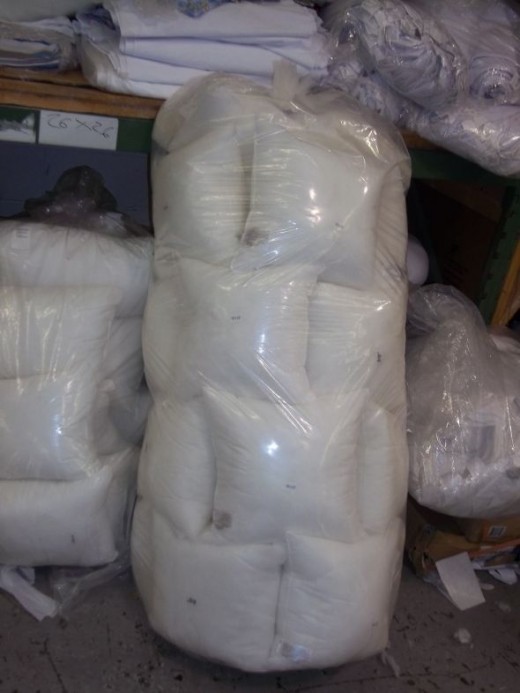
Video of the Manufacturing Process - In case the pictures weren't enough...
Here's a video of the machine in action.

